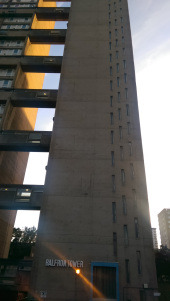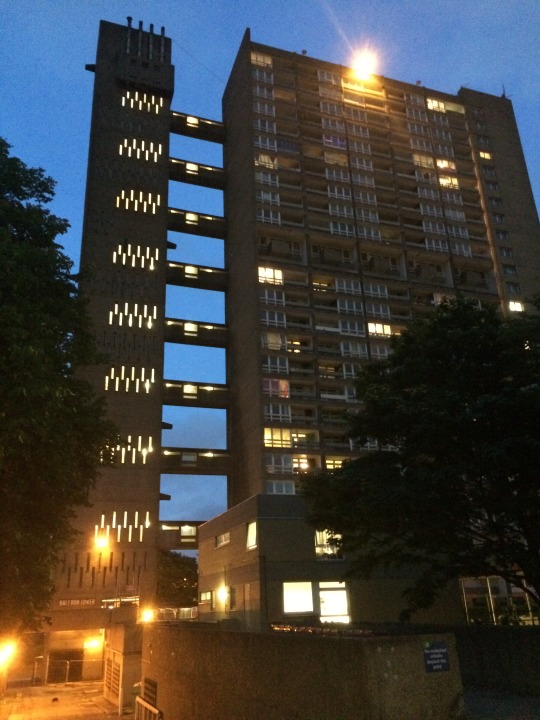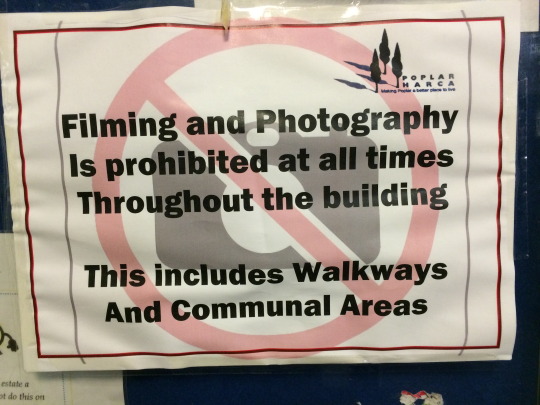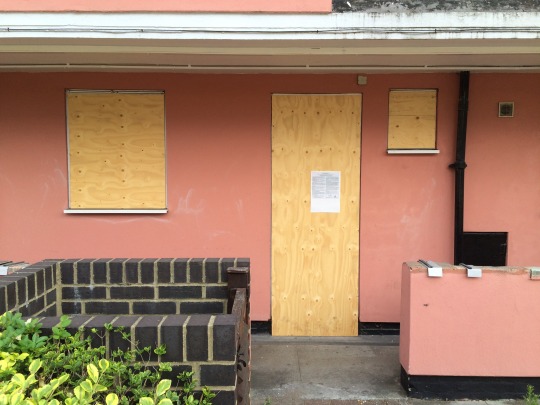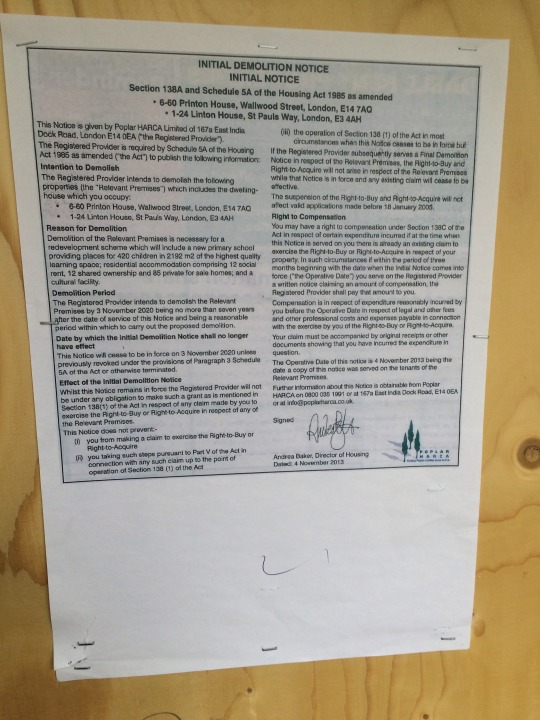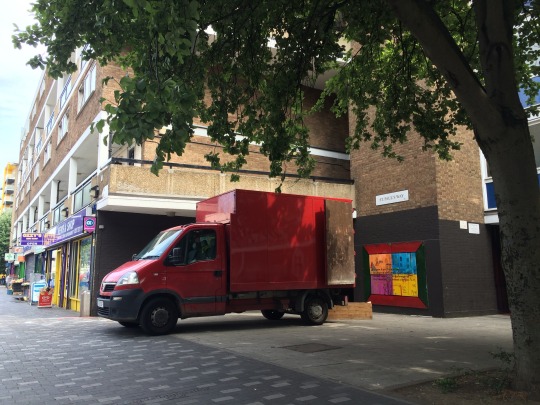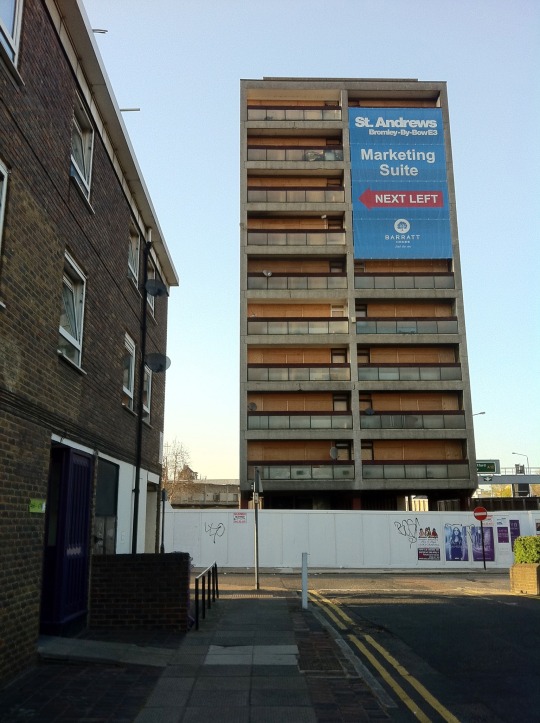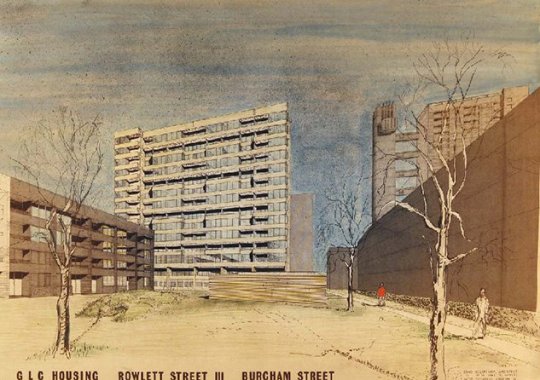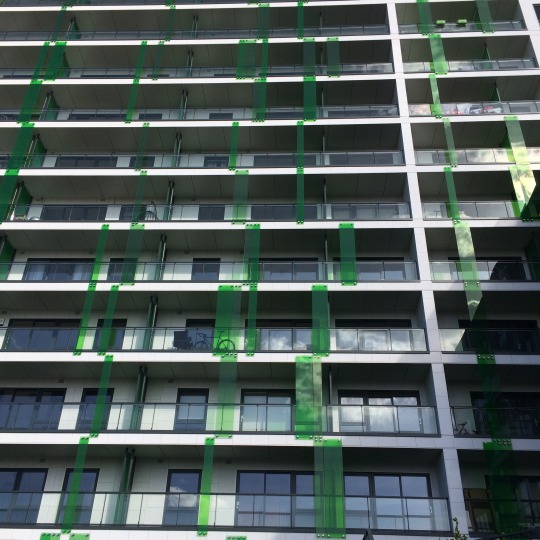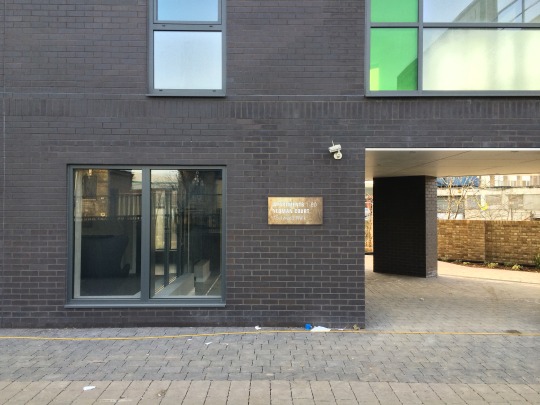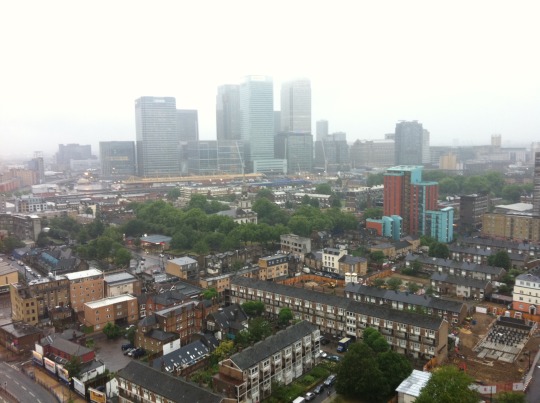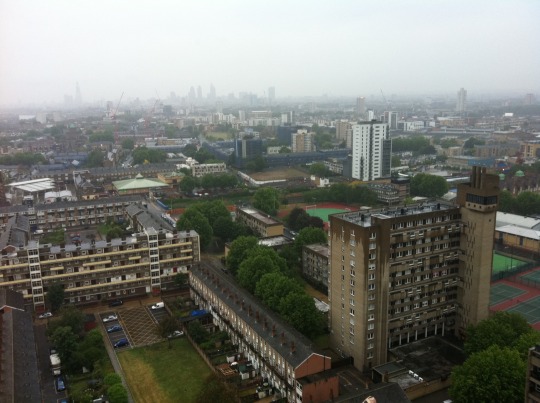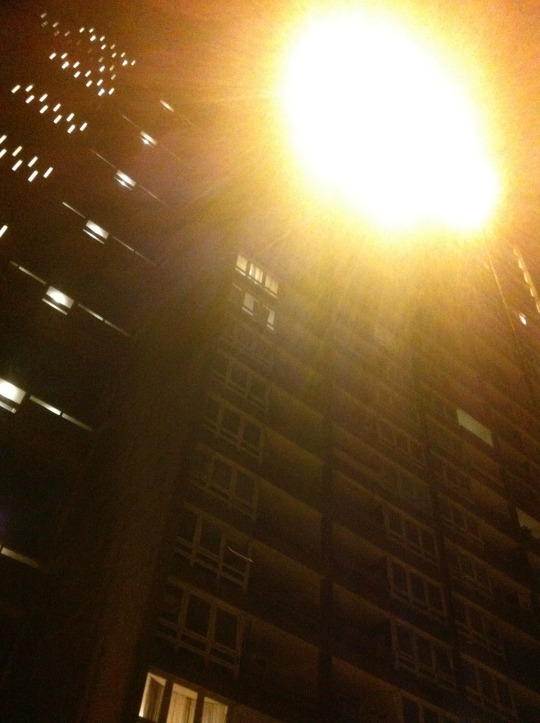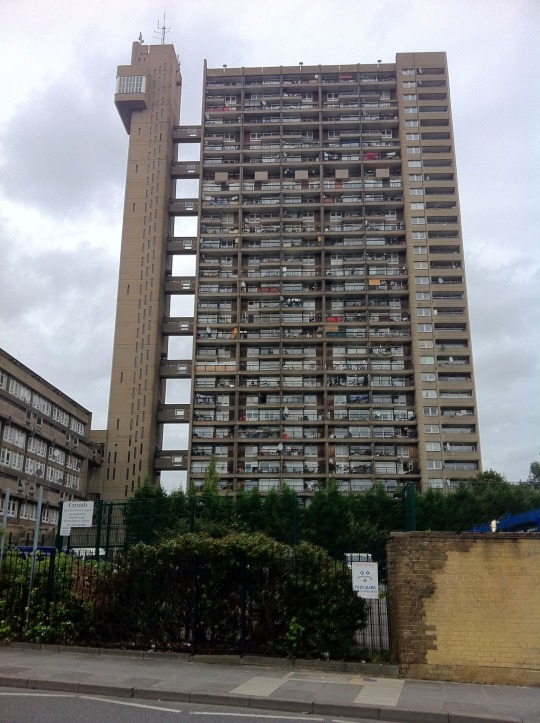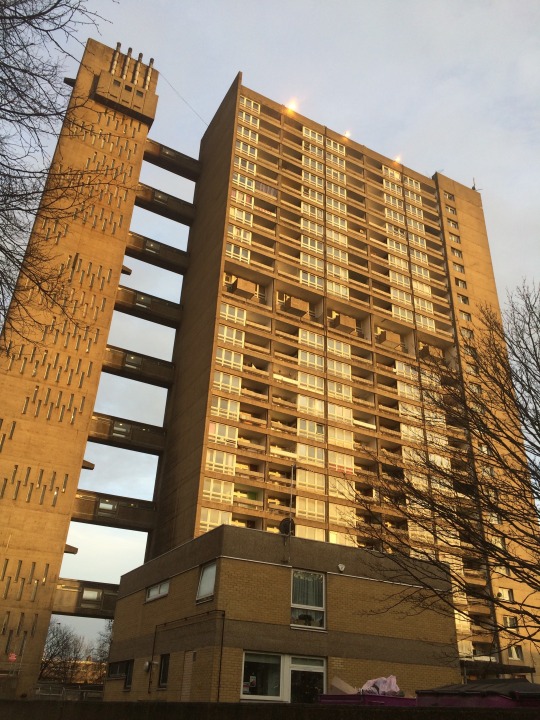
Balfron Tower, 2016 pic @balfronsocial
This article by architect James Dunnett originally appeared in Architects Journal on 8th January 2016 under the title “Historic England is Failing in its Mission” and is reproduced here by kind permission of the author with its original title.
Former DoCoMoMo-UK chief James Dunnett questions whether Historic England is doing
enough to protect the nation’s built heritage
According to the opening sentence on its website, Historic England is ‘the public body that looks
after England’s historic environment’. The organisation also pledges to ‘champion historic
places’. But has it really been doing that?
On two successive evenings at the end of last year (16 and 17 December) London Borough
planning committees allowed transformative works to major listed buildings on the strength of
approval by Historic England (HE), even though both schemes had faced opposition from
statutory amenity societies and numerous other conservation bodies.
In other words, the objections by the unofficial or popular groups have been rendered ineffectual
by the approval of Historic England. I refer to the proposed transformation works to Erno
Goldfinger’s Grade II*-listed Balfron Tower and to the 19th century Coal Drops in King’s Cross.
The Balfron Tower proposals developed by Studio Egret West are linked with the sale of the
block onto the private market. The scheme would strip out all the existing flat plans – except for
one of each type to be retained – and replace them with ‘open plan’ layouts by Ab Rogers
Design. The project also includes the removal of all the surviving original white-painted timber
windows – half of the present total – and the stained timber boarding, and their replacement with
box-section brown anodised aluminium windows. They are thinner, but of similar layout on the
West front but quite different on the East. The internal character will thus be transformed as will
fundamental external relationships between key façade elements.
Detailed objections were submitted by the Twentieth Century Society, DoCoMoMo-UK, and
numerous local resident groups concerned at the loss of social housing. But all was approved by
Tower Hamlets Council on the say-so of Historic England.
The Coal Drops on the King’s Cross railways lands, meanwhile, were designed in the mid-1850s
to allow coal to be delivered at high level by train and then transferred for local delivery by
gravity through traps in the bottom of the wagons and onto horse-drawn carts below.
The buildings are interesting in section and have impressive long arcuated façades topped by
plain slated saddleback roofs. There are two, roughly parallel, blocks – the East Coal Drop being
listed Grade II and the West not. However, both are in the Conservation Area. Centrally placed
in Argent’s wider King’s Cross Central development, they are now designated as the site for its
‘main retail offer’.
This means there is a demand, not present in the masterplan approved in 2006, for the provision
of ‘anchor stores’ of much larger floor area than the small ‘craft’ units in the bays of the structure
that were originally envisaged.
Heatherwick Studio’s scheme envisages hoisting these extra units and floorspace up into the air
in the form of an additional storey spanning across the courtyard between the two Coal Drops,
whose slated roofs will be twisted up and forward into giant curves so that they meet in the
middle, becoming ‘kissing roofs’. This fanciful notion seems quite alien to the sturdy functional
character of the Coal Drops, whose original roofs will be largely destroyed, and the extra storey
spanning the courtyard between them will transform it from an open-air to a covered, darkened,
space, and will also block views along its length from both directions.
But Historic England believes that while there will be harm to the listed structures it will not be
‘substantial harm’, and therefore acceptable in view of the benefits to the public of yet more
retail space. This view was opposed by the Victorian Society, SAVE Britain’s Heritage, the
Islington and Camden Civic Societies, the King’s Cross Development Forum and the Regent’s
Canal Conservation Area Advisory Committee. But on the say-so of Historic England, the
Camden Council committee approved it. The efforts and opinions of all these voluntary groups
have thus been negated by the ‘champion of historic places’.
Eight years ago, when I was co-chair of DoCoMoMo-UK with Dennis Sharp, I wrote an article
published in the Journal of Architectural Conservation questioning the record of English Heritage
(the predecessor of Historic England) in regard to 20th century buildings, very cautiously entitled
DoCoMoMo-UK – Questions of Assessment.
In the cases discussed, starting with Erich Mendelsohn’s Cohen House, and including the Royal
Festival Hall, the Barbican Arts Centre, the Royal College of Art, and Goldfinger’s Trellick Tower
(all listed), English Heritage had supported proposals which DoCoMoMo-UK and the Twentieth
Century Society had opposed. I was careful to acknowledge that it had ‘done admirable work in
persuading the government to list many important modern buildings’ while questioning ‘whether
in all cases the local and regional officers responsible for administering the protection do so
consistently’.
I also lamented that in the listings the importance of space was ‘by no means always recognized
… Goldfinger’s Balfron and Trellick Towers are listed, but not the spaces in front and around
them, which are the point of their design’. Last year, in face of the prospect of Balfron being
privatised and in an attempt to rectify this omission, I nominated Balfron for a listing upgrade and
Goldfinger’s surrounding work and spaces for inclusion in the listing.
Balfron itself was indeed upgraded, and nearby Glenkerry House was included, but in all other
respects the nomination was rejected by Historic England and none of the surrounding space
nor ancillary buildings were included. Indeed they lost the partial protection they previously had
under the former ‘curtilage’ rule. So the important spatial factor remains unrecognised.
Only the previous year, English Heritage had belatedly recommended Goldfinger’s work at the
Elephant & Castle for listing (rejected on previous occasions, with the result that much damage
was done in the interval), and this was confirmed for the government by an appreciative
minister, Ed Vaizey. But unfortunately English Heritage had decided to omit from the listing the
block actually housing the Elephant & Castle pub – small, but the cornerstone of the
composition. It was promptly covered by full-height advertisement hoardings and much of the
remaining original detail trashed, with the result that the listing of the remainder of the
composition was rendered almost ineffectual. As at Balfron, smaller ancillary buildings may look
secondary but can be of primary importance.
On the same evening as Tower Hamlets was approving the transformation of Balfron, Professor
Wessel de Jonge, co-founder of DoCoMoMo, was giving a talk illustrating the many important
buildings, such as the Zonnestraal Sanatorium and the Van Nelle Factory, for whose careful and
exemplary conservation of Modern Movement buildings he has been responsible, respecting for
example not just the original character of window frames in detail, but of the glass also.
There was just one junior Historic England officer present. But this talk illustrated the kind of
care and attention to detail on which Historic England should be insisting – in the more recent
‘heritage’ as much as the earlier.
Alongside this, there appears to be a failure of spatial understanding, resulting in the exclusion
from listing of vital elements of compositions such as at Balfron and the Elephant & Castle, and
the approval of the works to the Coal Drops, which will evidently have a catastrophic effect on
the space between them.
Historic England, and English Heritage before it, has of course suffered a succession of budget
cuts, which have doubtless undermined its confidence and the expertise on which it can draw.
For the sake of our heritage, they need to be restored.
Article is copyright 2016 James Dunnett
http://jamesdunnettarchitects.com/
Balfron Social Club
Poplar
19th January 2016


